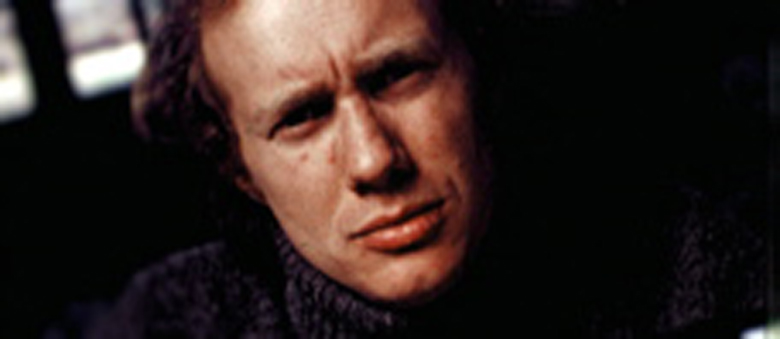Reviews
Alexander Olch
USA, 2008
Credits
Review by Stephen Snart
Posted on 11 October 2008
Source 35mm print
Categories The 46th New York Film Festival
The possibility of the cinematic equivalent of the autobiography has become more and more of a reality over the past few years. While there have long been documentaries in which the filmmaker’s visual and aural presence is a fundamental part of the film’s process of addressing a broader concern (seen most famously in the work of Ross McElwee and Michael Moore; participatory documentaries as theorist Bill Nichols dubs them), the dawn of the 21^st^ century has seen a development in which the individual is the subject and that subject is also the filmmaker. The prime example of the cinematic autobiography is Jonathan Caouette’s Tarnation, a surreal blend of home movies, avant-garde practices, and home editing software binging. Caouette, who has seemingly been filming himself his entire life, compiled approximately two decades of self-recordings in order to create a hodge-podge autobiographical documentary of his experience growing up with a mentally unbalanced mother. Somewhere between Tarnation and Grizzly Man (in that the subject’s death prohibited the film’s post-production from being truly autobiographical) is The Windmill Movie, the chronicling of filmmaker and Harvard film professor Richard P. Rogers.
Rogers spent the majority of his life trying to make a film about himself. Starting and stopping, adjusting and readjusting, he continually tinkered with what design the film should take and what sort of threads should hold it together. At certain points he even cast actors to play himself in reenactments. Wallace Shawn (The Princess Bride, Clueless), a real life friend of Rogers, appears in The Windmill Movie on occasion, reciting some of the dialogue that we’ve previously seen addressed to the camera by Rogers himself. These moments of juxtaposition are fascinating because they underline the inability of the actor’s performance to capture the pathos of the real life Rogers. Unable to ever decide on a cohesive style for the film before succumbing to cancer in 2001, Rogers left behind an assortment of film reels and diaries. After his death, Rogers’ wife, photographer Susan Meiselas, contacted one of his former film students, Alexander Olch, to sort through the personal media database and assemble what would eventually become The Windmill Movie. By using Rogers’ film extracts and journal entries as a primer, Olch edits Rogers’ existing material alongside reenactments and postulations. Seeing the 80-minute final product, it is occasionally difficult to tell where Rogers leaves off and Olch begins—a quality that is ultimately more of a nuisance than an intrigue.
Two major insecurities plague Rogers throughout the film and assumedly throughout his life: a self-perceived inferiority as a filmmaker and a struggle to accept his privileged upbringing. “Is it unfair to criticize yourself for not being Spielberg?” is a question Rogers voices twice in the film. Despite holding a position as director of the Film Study Center at Harvard and directing a number of television documentaries, Rogers was always self-critical about his filmmaking talent. “You don’t like the way I shoot, do you?” he repeatedly needles Susan during a striking moment when it is clear that he is looking for someone to confirm his deep-seated fear of failure rather than to receive constructive criticism. The New York Film Festival screening of The Windmill Movie was preceded by Quarry, an experimental short that Rogers made during his senior year at Harvard. In its medley of teenagers frolicking, swimming, sunbathing, and cliff-jumping in a town quarry, the short uses non-synchronous voiceover to spout surface-level concerns about topics like factory wages and Vietnam in competition with a free flowing pop score that implies Kenneth Anger as a direct influence. Despite being well-shot (capturing the cliff jumps in majestic glory and sumptuously contemplating the beauty of raindrops on water), this is no lost masterpiece. The combined elements of the twelve-minute film are not engaging enough to affect much effort in sorting out their connections amongst their disparity. It does however make for an interesting precursor to The Windmill Movie and serves to better understand Rogers’ sensibility and dissatisfaction toward his own filmmaking.
The other major concern is social class. Early in the film, he states his frustration at being privileged, white, and rich. He follows this with the acknowledgement that he can’t expect sympathy for such a complaint: “it must be infuriating to hear someone complain in the Hamptons.” Yet his concerns are acute and his oscillation between embracing his privilege and being confined by it is one of the film’s most compelling aspects. The title of the film is a reference to the Wainscott Windmill, an antiquated symbol of affluence found in his hometown in East Hampton. In a wonderfully illuminating moment, Rogers reflects on the pride he feels for having a house in Wainscott but also the reality of not having earned it. This is something he seems to feel about his life’s achievements in general: he’s inherited a lot but he hasn’t earned much on his own.
Rogers’ concern about getting an audience to invest in someone whose major gripe is that he is too privileged is unfounded, at least for the first hour. By the end, the pervading sense of solipsism does become wearying but this is due not to the subject of Rogers but to the increased awareness of Olch’s hand as filmmaker rather than as curator of Rogers’ legacy. Olch initially uses Rogers’ audio recordings and on-camera confessionals to narrate the film but when the stock material runs out, Olch begins narrating the film himself by reading extracts from Rogers’ diary. For the last portion of the film, while Rogers was undergoing cancer treatment and unable to write in his diary, Olch takes to emulating Rogers’ writing style, a practice which results in a momentary illusion of identity but an ultimate inability to replicate Rogers’ engaging personality. More to the problem is that Olch’s bland voiceover resembles a disengaged actor delivering a routine audio book recording. For all the mental wrestling that Rogers did over whether or not to cast an actor to play himself, it’s hard not to wonder if Olch ever considered a similar route—and whether he would have benefitted from it. This points to a central problem of the film in that Olch seems uncertain about what degree of involvement he wants to have in the text. As it is, he wavers somewhere between participant and ghostwriter.
This criticism is not designed to charge Olch of failing to meet unachievable expectations, like making the material as emotional for the audience member as it is for those involved or recording narration as mellifluous as Werner Herzog’s. Rather it is to attest to the power of the mode of the cinematic autobiography itself. Just as we see Shawn unable to ape Rogers as a physical presence, we also witness Olch’s inability to serve as a spiritual surrogate for the subject. But this is not meant to disparage Olch’s work entirely. The elegiac tone and pacing of the first half of The Windmill Movie is remarkable in its achievement of the uncanny sensation of being inside the fragmented memories of the recently deceased: soaking in nostalgia, grappling with squandered potential, lamenting missed opportunity, relishing a loved one.
The flaws of The Windmill Movie serve to emphasize the uniqueness of the individual. Just like Timothy Treadwell and Jonathan Caouette, Rogers can only be imitated, never replicated. And therein lays the potential of the cinematic autobiography: to record a presence that can’t be performed. It is an effort that will fundamentally yield mixed results; it seems cinematic autobiography will ultimately come down to a matter of taste in character rather than an appreciation of form (as such, Rogers is an interesting subject but not a fascinating one). Either way, it is a burgeoning mode of filmmaking that will be interesting to monitor as it develops, a development that will no doubt be fostered (for better or worse) by the batch of technophile youngsters growing up in an age of cheap video gadgets and instant YouTube accessibility.
More The 46th New York Film Festival
-

Wendy and Lucy
2008 -

The Northern Land
2008 -

The Last Command
1928 -

Hunger
2008 -

Lola Montès
1955 -

Summer Hours
2008 -

Gomorrah
2008 -

Changeling
2008 -

Che
2008 -

I’m Gonna Explode
2008 -

Waltz with Bashir
2008 -

Happy-Go-Lucky
2008 -

The Windmill Movie
2008 -

Tulpan
2008 -

Afterschool
2008 -

A Christmas Tale
2008 -

The Headless Woman
2008 -

Bullet in the Head
2008 -

Four Nights with Anna
2008 -

Night and Day
2008 -

The Class
2008
We don’t do comments anymore, but you may contact us here or find us on Twitter or Facebook.



